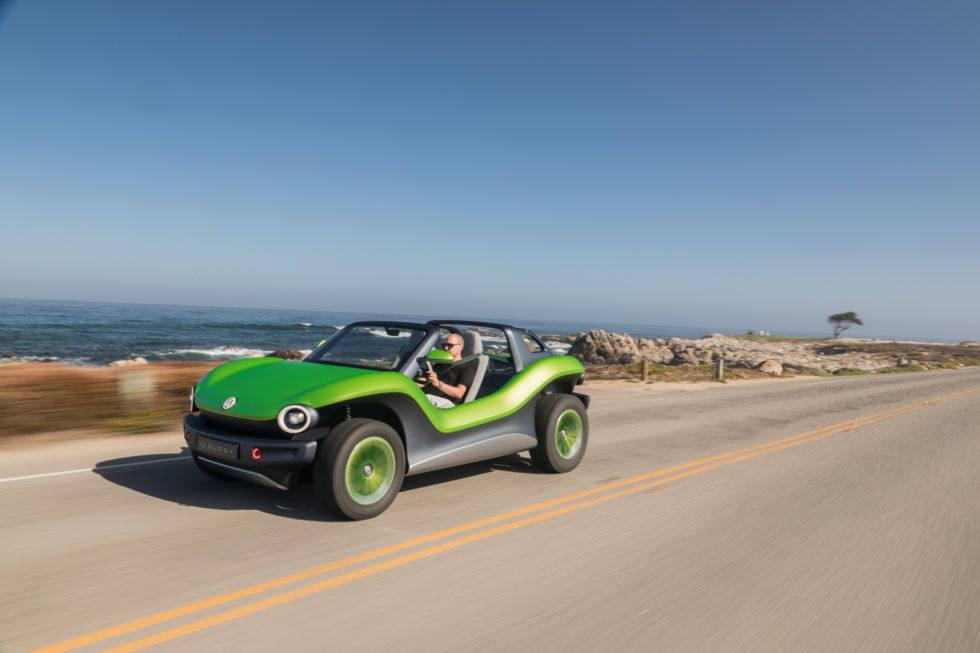-

Volkswagen brought its ID Buggy electric concept to Monterey Car Week. And they let us drive it! [credit: Ingo Barenschee ]
CARMEL, CALIF.—Do you remember that bright green electric beach buggy that Volkswagen showed off back in March? It's called the ID Buggy, and it's one of a growing number of ID-badged concepts from the automaker that show the way to its post-diesel future. It's a wildly different-looking bunch, yet each uses VW's new modular architecture for battery electric vehicles, called MEB. The ID Buggy is definitely the most left-field of the ID vehicles, even without the bright green bodywork. But under that one-off concept body is a production MEB powertrain, just like the one that will appear in the Europe-only ID 3 as well as the US-bound ID Crozz crossover and ID Buzz BEVs. But the craziest thing about the Buggy isn't the way it looks or that VW let me drive it. No, the craziest thing about the Buggy it's the fact that VW is actively exploring ways to put it into production.
Modular architectures have been all the rage among automakers for a while now. These are much more flexible than the platforms of old and are more like a giant box of parts and components that simplify the design process and the supply chain. VW Group has been all-in when it comes to modular architectures since it introduced its MQB platform in 2011, which provides the bone structure for everything from the diminutive Polo hatchback in Europe to the made-in-Chattanooga, Tennessee Atlas three-row SUV.
MEB is the newest of the company's architectures, and unlike the modular architecture that BMW's developing, this one is just for BEVs. (MEB will provide the bones for rear- and all-wheel drive BEVs for the VW, Skoda, and Seat brands. Meanwhile, Audi and Porsche are developing a separate architecture for bigger, faster, and more expensive BEVs.) As you might expect, at the heart of each MEB model is its lithium-ion battery pack. For the Buggy, that's a 62kWh pack, which powers a 150kW (201hp), 310Nm (227lb-ft) electric motor that drives the rear wheels. VW's press materials say that the buggy will go from 0-62mph (0-100km/h) in 7.2 seconds, reaching a top speed of 100mph (160km/h), with an estimated range of 155 miles (250km) on the WLTP test.
No comments:
Post a Comment